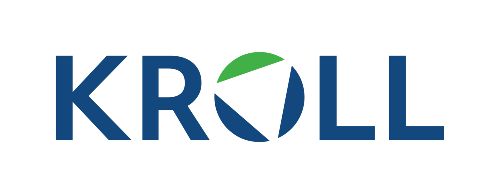Sponsored Content
Tackle challenges head on rather than let circumstances overtake you and your business, advises Brendan Hanratty (pictured), Managing Director of Restructuring Advisory with Kroll
One of the abiding characteristics of the current global crisis is the uncertainty it has created in all aspects of life. There is a stark lack of certainty about what the future holds, and this is as true in business as it is elsewhere. Many businesses are currently focused on day-to-day survival, managing cashflow as best they can and minimising costs.
As we emerge from the crisis, businesses are seeking ways to pivot and adapt to the changing environment. The theme that has emerged is one of evolution within industries, such as the seemingly inevitable move toward hybrid working for office-based employees.
Globally, governments have largely departed, thankfully, from austerity programmes and are focused on increased money supply. Challenges nonetheless abound and our advice is always to tackle head on rather than let the circumstances overtake you and your business.
A key factor for numerous sectors and businesses will be to re-engage with their suppliers, banks, creditors and other stakeholders to reset the business. In many cases this will require a revisiting of pre-existing supply terms and debt structures.
The best scenario when navigating a challenging economic environment is through an agreed negotiated position, allowing the business to maintain its core network of clients and supports for maximum continuity in a period of extreme uncertainty. Achieving this requires presenting well thought out, realistic plans and proposals to obtain buy-in.
In order to avail of bank funding or other supports (e.g. grant aid) it is important to present your plans in a sufficiently clear, concise manner. Unfortunately, no matter how far-reaching the economic stimulus or financial support is, it will be finite. To ensure the best possible outcome, it is vital to optimise your interactions with third-party stakeholders.
When engaging stakeholders, it is important to be aware of their priorities, the frameworks they operate in and the key criteria they require for providing support. This will enable you to best articulate how your company meets their requirements.
In addition to funding supports, businesses will need to proactively engage with other key stakeholders, including staff, shareholders, landlords, Revenue Commissioners, trade creditors and suppliers.
Scenario Assessment
It is important to look at different potential outcomes over the short to medium-term horizon, and at base-case and worst-case scenarios. Use these scenarios to support decision-making and ensure your business is robust if expected trading patterns don’t materialise.
Reaching Out To Funders And Creditors
Use your prepared and stress-tested forecasts to negotiate with your funders, be that for fresh capital, forbearance or restricted debt. As well as using debt and equity to stabilise a company, creditor support and altered supply agreements may be an essential plank of any reorganisation process.
A significant number of businesses will need to recalibrate their balance sheet to continue trading on a long-term basis. As such, it will be a market feature people will come to expect. Being open, transparent and communicative during this process tends to yield the greatest results.
In seeking to informally renegotiate your position, an understanding of the broader legislation and principles that guide restructuring and insolvency can be vital in ensuring that any deal achieved is at least better than that available through more formal processes. Banks, PE funds and large-scale creditors will, in part, be steered by the outcomes they would achieve through more formal processes and businesses should do the same.
Examinerships
Sometimes it is not possible to reorganise through an informal process. Formal processes such as examinerships, schemes of arrangement and the much-discussed (and soon to be legislated) Small Company Administrative Rescue Process may be vital in bringing about the fundamental changes needed to ensure business survival.
Examinership was established in 1990 on the back of the threatened collapse of the Goodman Group. Since then it has been used as a means to provide a formal structure under court supervision to sustain businesses. The process provides court protection, for a maximum of 100 days, to a company while the examiner seeks to restructure the business and implement a scheme of arrangement where creditors must obtain at least what they would obtain if the company was wound up or placed in liquidation.
The process is intensive and best outcomes are achieved when pre-planning is maximised. Examinerships can be relatively costly and should be entered into with a clear picture of the likely outcomes, rather than as a last resort. Examinerships enable existing management to retain control throughout the process and protects the company from the appointment of a receiver or liquidator during the 100-day protection period.
The company can continue to trade throughout the process, providing management with time and space to rescue their business. This gives those most familiar with the company an opportunity to contribute towards its rescue and, if feasible, to retain control on a long-term basis.
The Small Company Administrative Rescue Process (SCARP)
The government has recently published the outline of the SCARP and legislation is imminent. It is a very welcome bid to support SMEs, which represent 98% of companies in the country and employ around 800,000 people. SCARP is designed to supplement the pre-existing examinership process in Ireland, which is typically availed of by larger companies.
The process as currently outlined is not without its flaws. However, it is a largely timely, desirable and necessary development. It is designed to be faster, simpler and more cost-effective than the examinership process and should allow access to companies for which examinership simply would not be viable from a logistics or cost perspective.
SCARP in effect mirrors key elements of the examinership process, but due to its (in principle) reduced interaction with the courts, the process should prove to be significantly more cost-effective. The process will be available to companies with a turnover not over €12m and a balance sheet not exceeding €6m, with no more than 50 employees.
The key features of the process from a business owner’s perspective are that it is commenced by resolution of directors rather than by application to court; it requires that the rescue plan passed by a simple majority (51%) in value of creditors; and it does not require application to court for approval of the rescue plan (provided no creditor objects). The process is overseen by a Process Advisor, which will in practice be an experienced insolvency expert, who will be licensed and regulated for this work.
The various levers and mechanisms that are built into this process warrant their own discussion, but for business owners where creditor concerns – be it bank, suppliers, landlord’s taxation etc. – are an issue, this process should be looked at early in any rescue/restructuring programme.
Planning For The Future
Company owners and directors face many challenges ahead. Among those include creating, structuring and growing their business where possible in this chaotic, challenging environment. It is vital to have the core structures of your capital, cost base and funding position reassessed and reorganised to create certainty, and allow for a focus on growth and business renewal.
Here at Kroll we have worked with a number of companies in successfully planning for the future. The key is to not allow the running your business prevent you undertaking essential negotiations or reorganisations, which in our experience is often a result of directors staying within their comfort zone of day-to-day operations rather than grasping the nettle on wider issues.
While there are challenges ahead, for those who tackle them head on and engage early in restructuring and pivoting their business, there are reasons to be positive about the future, as employment and economic activity start to recover.












